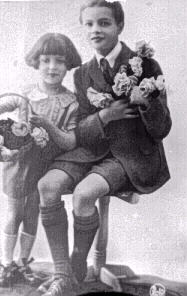
Figure 1.--British boys in the 1950s generally grey short pants suits or their school uniform which generally meant a blazer and grey shorts.

Figure 1.--British boys in the 1950s generally grey short pants suits or their school uniform which generally meant a blazer and grey shorts. |
Short pants suits for boys began to appear in the mid-19th Century.
Previously boys had worn
skeleton
and
sailor suits
and
tunics with long pants after graduating from baby
dresses
and
kilts. Their fathers in the early era of the 19th Century wore
knee breeches.
By mid-Century that had changed. Men wore long pants and children
knee
length pants. At mid-Century the suits worn by boys were generally
plain, although
some more elaborate styles were available to romantic mothers. It
was not until the 1880s
that elaborate
Fautleroy suits appeared with lace collars and
fancy
blouses.
The pants worn by boys after the mid-19th Century came to the knee.
Many
styles buttoned at the knee, others were simply cut off at the knee.
They were worn with long stockings which were kept up by suspender
waists. The stockings were usually a dark color or horizonal stripes
which became popular ..... The tops of the stockings which came
over the knee held up
with clasps. Only the very youngest boys had bare knees,
and it was even rare for little boys wearing more juvenile styles.
Boys wearing short pants suits always wore long stockings.
Boys wearing short pants suits with knee socks and bare knees
began to appear in England after the First World War and became increasingly widespread
during the early 1920s. Before
the War knee length pants were common, but generally worn with long
stockings.
After the War the shorts became shorter and were more commonly worn
with
knee length socks, leaving the knees bare. The fashioned was greatly
influenced by Lord Baden Powell's growing
Boy Scout uniform. The fashion
spread to the United States, especially for boys from affluent families.
Well to do Americans had always looked to
England, at least for men and boys'
fashions much to the chagrin of American boys. Despite the English trends, however,
knicker suits were more common in America--especially for older boys. Shorts
soon became the dominate fashion for boys in major European countries. In
many, especially France and Italy, the fashion for increasingly shorter shorts became wide spread. British
boys, however, generally wore longer knee length shorts, often baggier than on the
Continent.
Boys' pants or trousers through the 1920s had button closures.
The BFGoodrich Co. in 1924 registered the name "zipper," although
it would be a number of years before this closure was used in any
apparel other than overshoes, it would eventually repace buttons.
Eventually vitually all pabts would have zipper rather than button closures.
American boys after the First World war did not wear short pants suits as commonly as European boys. For some reason, many American mothers did not ssem to think it was healthy to dress boys in short pants leaving their knees bare during the winter. This did not seem
|
Figure 2.--American boys from affluent families in the 1960s generally dressed up for church and other special occasiions in black or navy blue short pants suits. |
I remember the first time I wore it. A new family had just moved in near us and I had made friends with the boy who was about my age. He invited me to his birthday party, he was turning 12. I was hoping that I Wouldn't have to dress up, but mom insisted I wear my new suit? Almost as irritating as the shorts, were the blue knee socks I had to wear with them. By this time, knee socks were Becoming something that girls wore. Only the very smallest boys wouldn't be caught dead in them. I still remember the scene when I ran the doorbell. His mom answered the door and just beamed when she saw me. "My goodness Phillip, don't you look nice," of course referring to my short pants. She just gushed all over me. Actually she was worse then my friends who were used to seeing me in shorts. My friend Richard came over to accept his present. He was surprised to see me in shorts and knee socks, I noticed him glancing at my bare knees. But mercifully he didn't say anything. His mother though wouldn't let it go. "Now see Ricky, how nice Phillip looks. I don't see why you won't let me get a short pants suit for you." Obviously it was a bone of contention between them.

Figure 3.--French and other Continental boys in the 1930s tenned towear shorter cut shorts withbtheir short pants suits. |
Navigate the Boys' Historical Clothing Web Site:
[
Introduction]
[
Chronology]
[
Clothing styles]
[
Biographies]
[
Bibliographies]
[
Contributions]
[
Boys' Clothing Home]